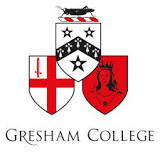
Vision is constructed from electrical impulses generated by the eye in response to a narrow band in the spectrum of electromagnetic radiation. The seemingly simple daily task is actually complicated function that after 2,500 years of study is still revealing astonishing insights for biology and psychology.
In ancient times it was not understood that the eye received light form external sources. Three main schools of thought came into prominence. The first of these regarded vision as an analogy of touch. It was proposed that an invisible ray came out of the eye and on touching an object of regard would enable vision. This extromission theory had a lot of support and was backed up by common observations such as the brightly lit reflexes from animal eyes.
Opposing this theory atomists suggested that small thin sheets of objects, similar to the skin of a snake, were shed and these made their way into the eyes where vision was enabled in the lens. The problem with this view was the constancy of mass of objects and also the problem with crossing lines of sight. For these reasons extromission remained in vogue for over a thousand years. In particular, it was used by mathematicians such as Euclid, to describe a sophisticated model of vision. This model predicted known facts and was used to understand the behaviour of reflection (the bouncing of light rays off surfaces) and refraction (the bending of light rays by transparent objects).
Extromission theory was not without its critics. In particular it was considered unlikely that a visual ray emitted from the eye could, for example, instantaneously reach the stars.
Aristotle proposed a rather more opaque theory which depended on the opaqueness of the medium. However when lit, certain substances such as air, could become transparent allowing instantaneous impression of the object to be present in the lens of the eye.
Top: Intromission, centre Extromission, bottom Mediumistic
Following the demise of Alexandria, significant developments in visual science were curtailed. Following the Muslim conquest of the older empires a new awakening of interest occurred, possibly stimulated by interest in burning mirrors. A torrent of translations of Greek texts became available stimulating a revival of optical and ophthalmological learning in the Middle East. The greatest of these was Ibn al Haythem 965-1049. He Adopted the visual cone of Euclid and Ptolemy, but with intromission theory. This was a major advance. Some problems still remained. How can an incoherent radiation allow for coherent visual perception? If the eye receives radiation from every point in the visual field then confusion not clear perception should be the outcome. There must be one-one correspondence between the pattern of receiving points replicating the radiating points in the visual field.
Alhacens solution was to incorrectly propose that not every point in the visual field is vision-producing. Only rays perpendicular to the primary sense organ are used forming a cone with the base being the visual field, the vertex at the centre of the eye. An upright image can then be formed in the organ of sight, the lens of the eye.
With the clashing of civilizations yet again, these Arabic texts and Arabic translations of Greek manuscripts became available to Western Scholars. In particular the Fransciscans devoured the information and produced their own versions of optical texts. Whilst some advances were made, it took the renaissance experimentalists to show once and for all that the retinal image is inverted and the optical properties of the human eye became to be understood correctly.
The microscope led to original discoveries about the structure of the eye and Ramon Cajal produced beautiful drawings of the cellular anatomy of the retina.
In the last century scientists were able to unravel these intricate neural pathways. This alone could not explain how we see.
It was the astounding counterintuitive discoveries of the electrophysiologists and visual scientists enabled an understanding of how inhibition works to process the image formed by the optical system.
In fact the information that the eye sends to the brain is not at all like a photograph of the visual scene. It is hghly processed to enhance edges, detect areas of difference in illumination and to pass on wavelength discrimination. From this our brains construct a visual scene which includes the information necessary for survival.
The process of conversion of light to electirical energy was beautifully demonstrated by Wald.
History of optics David C. Lindberg: 1981. Theories of vision from al-Kindi to Kepler. Also The beginnings of western science
Sabra AI: 1981. Theories of Light: From Descartes to Newton. Cambridge University Press.
Mark Smith: 1999. Ptolomy and the foundations of ancient mathematical optics. Also Alhacen's Theory of Visual Perception
Huff, Toby: The Rise of Early Modern Science: second edition
Breedlove et al: 2008. Neuroscience Sinauer Associates
Bruce V et al: Visual Perception: Physiology, Psychology and Biology
Gregory RL.1998 Eye and Brain: The psychology of seeing Oxford University Press.
Wade N. 2000. A Natural History of Vision MIT Press
Ings Simon: 2007 The Eye. A Natural History Bloomsbury
© Professor William Ayliffe FRCS, 30 September 2009